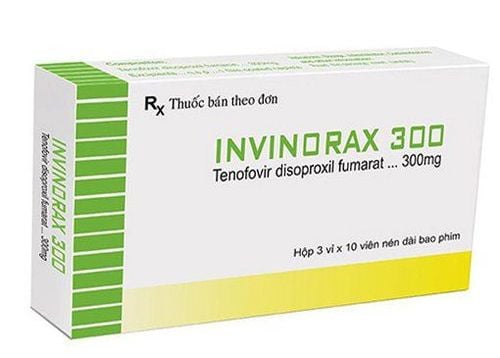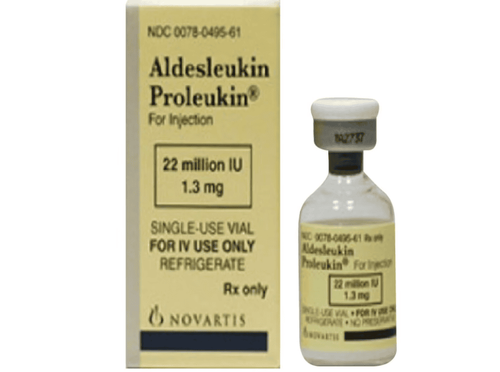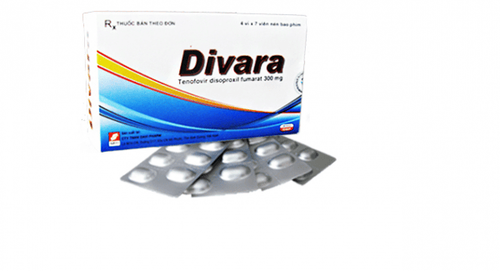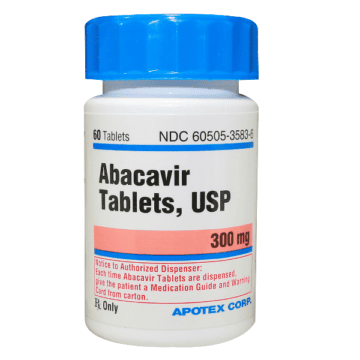This is an automatically translated article.
Pharbavix is a drug that inhibits the growth of HIV-1 and HBV viruses, indicated for people infected with either of these viruses or a combination of both. This is a prescription drug, so patients need to consult a doctor to use it safely and effectively.
1. What are the effects of Pharbavix?
The ingredient of Pharbavix is Tenofovir disoproxil fumarate with a strength of 300mg. Pharbavix is available as a film-coated tablet.Tenofovir disoproxil fumarate is a Nucleoside phosphonate analogue of Adenosine monophosphate. When taking the drug Tenofovir disoproxil fumarate will hydrolyze diester converted to Tenofovir and is further phosphorylated by cellular enzymes to form tenofovir diphosphate (TFV-DP).
This active ingredient inhibits HIV-1 and HBV reverse transcriptase by competing with the natural substrate Deoxyadenosine 5'-triphosphate and, after incorporation into DNA, terminates DNA strand synthesis.
Thanks to that, the drug has the effect of inhibiting the activity of HIV and HBV viruses, slowing the progression and infectivity of this virus.
2. Indications and contraindications for taking Pharbavix
Pharbavix is indicated for the treatment of the following cases:
HIV-1 infection: Pharbavix is usually indicated in combination with at least 1 other antiretroviral drug to treat viral infections causing immunodeficiency in people HIV type 1 (HIV-1) infection including adults and children 2 years of age and older and weighing ≥10 kg. Chronic Hepatitis B: Pharbavix is indicated for the treatment of chronic hepatitis B virus (HBV) in adults and children 12 years of age and older when there is evidence of viral activity or cirrhosis. Do not use Pharbavix in the following cases:
Do not use Pharbavix if you are sensitive to Tenofovir or any of its ingredients. Due to the fact that the excipient is Lactose, you should not use this medicine if you have galactose intolerance, glucose or galactose malabsorption, lactase deficiency.
3. Dosage and how to use Pharbavix
How to take Pharbavix:
Pharbavix is taken orally and taken with a full meal, or even when there is little food because this increases the bioavailability of the drug. Should be taken at the same time of day to help increase the effectiveness of treatment. You should set a reminder schedule so that you can take your medication regularly and effectively. Dosage of Pharbavix:
The recommended dose of Pharbavix in adults and children weighing at least 35kg is 1 300mg tablet taken once daily. Dosage of Pharbavix is the same for both HIV and HBV indications. The recommended dose of Pharbavix in children 2 years of age and older weighing at least 17 kg is 8 mg tenofovir disoproxil fumarate (TDF)/kg body weight (maximum 300 mg) per day. Dosage for children 2 years of age and older who weigh 17-35kg and are able to swallow tablets on their own should be adjusted according to weight. Weight should be monitored periodically and then the dose of Pharbavix can be adjusted accordingly. Children 17-22kg use 150mg/day; Children 22 - 28 kg used with a dose of 200mg / day; Children 28-35kg use with a dose of 250mg/day; Children > 35kg dose as adults is 300mg/day. Renal impairment: The dose should be adjusted if the patient has renal impairment and the dose should be adjusted according to the degree of renal impairment, creatinine clearance or glomerular filtration rate.
Patients with hepatic impairment: No dose adjustment is required in patients with hepatic impairment.
Overdose:
Symptoms of overdose have been reported including nausea and vomiting, skin rash, low blood phosphate levels, causing acute renal failure, liver lactic acid poisoning. Treatment: In case of an emergency overdose, the patient needs symptomatic treatment and supportive measures.
4. Side effects of drugs
The following side effects may appear during treatment with Pharbavix:
Digestive disorders such as nausea and vomiting, diarrhea, causing bloating, indigestion, loss of appetite; Severe acute hepatitis B occurs in patients with HBV infection. Decreased kidney function. Immune reconstitution inflammatory syndrome. Osteoporosis, osteonecrosis and mineralization defects. Lactic acidosis/enlarged liver and fatty liver; increased triglycerides, increased blood sugar. Peripheral neuropathy, headache, dizziness, somnolence, depression, feeling short of breath, bronchial asthma, profuse sweating, muscle pain. These side effects may not be experienced by all patients. But if you experience the above side effects or other side effects when taking the drug, the patient needs to follow up to notify the doctor.
5. Things to keep in mind when taking Pharbavix
All patients should be tested for hepatitis B virus before starting Pharbavix 300mg to treat HIV-1 infection or including chronic hepatitis B. Prior to initiation and during administration of Pharbavix, evaluation of serum creatinine, creatinine clearance, urinary glucose and proteinuria should be performed in all patients on an appropriate schedule. In patients with chronic kidney disease, serum phosphorus levels should also be assessed. During a severe exacerbation of hepatitis B, it may be necessary to discontinue anti-HBV therapy, including Pharbavix. Patients with HBV infection who stop taking Pharbavix should be closely monitored for several months after stopping treatment because of the potential for a flare of viral activity, which can lead to severe hepatitis. Patients may need to be reintroduced if the virus becomes active again or patients with cirrhosis should not discontinue the drug. Impaired renal function: Because Tenofovir is mainly eliminated by the kidneys. Renal failure, including cases of acute renal failure and Fanconi's syndrome (renal tubular damage due to severe hypophosphatemia), has been reported with the use of Pharbavix. Therefore, close monitoring is required during treatment. Monitor Triglyceride index, blood glucose when taking the drug. The drug can also reduce bone mineral density, so it is important to evaluate this disease in the presence of bone pain to prevent the risk of fracture. For pregnant women and nursing mothers: Carefully weigh the benefits and risks when using Pharbavix for pregnant or lactating women. Drug Interactions: Pharbavix when used with non-steroidal anti-inflammatory drugs, Fosscanet, Didanosine can cause nephrotoxicity. In addition, it can also cause interactions with other drugs, so patients should list the drugs they are using to their doctor to avoid interactions between drugs. Storage: Pharbavix should be stored in a cool, dry place, with appropriate humidity, at a temperature below 30 degrees Celsius. Make sure to keep the medicine out of the reach of children. Thus, Pharbavix is used to treat diseases caused by HIV and HBV infection. Pharbavix is prescribed under a doctor's prescription, you should not arbitrarily buy medicine to treat at home because it may have dangerous effects.













